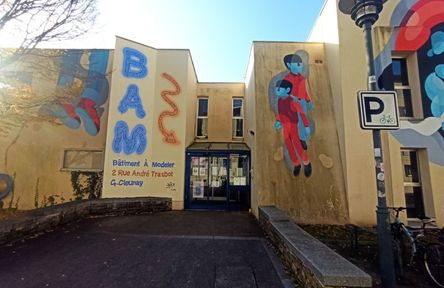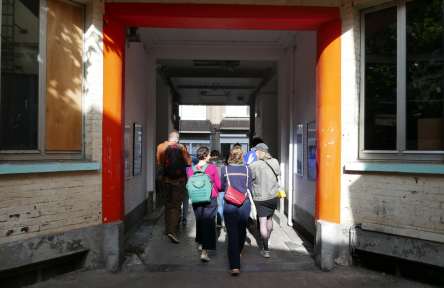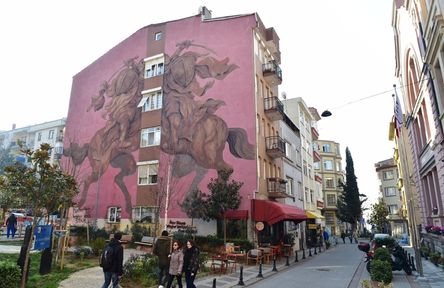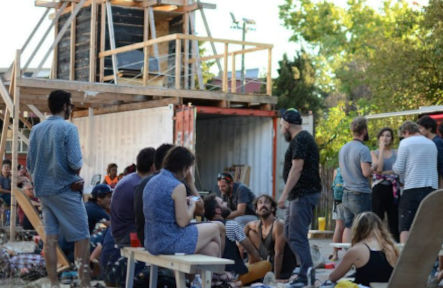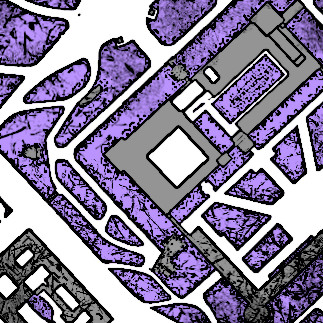Urban Dynamics
In the face of growing gentrification and touristification across European cities, common spaces emerge as vital tools for inclusion and renewal. By reactivating underused buildings, they foster community ties, local identity, and collective agency. Their impact—shaped by urban policy, socio-economic factors, and spatial design—offers concrete responses to urban challenges through innovation and citizen-led regeneration.
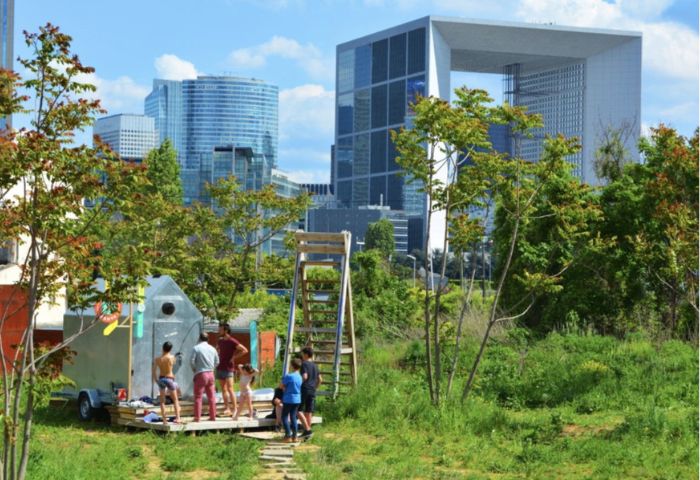
Commons challenge the dominant urban paradigm of privatization by advocating for shared management, collective decision-making, and equitable access to urban spaces. Unlike profit-driven developments that often marginalize vulnerable populations, commons prioritize inclusivity and public value. As scholars such as David Harvey suggest, commons resist commodification and gentrification, empowering communities to co-create urban environments that prioritize use-value over exchange-value. This emphasis on shared stewardship offers a counter-narrative to urban development driven by speculative markets, which frequently displace long-term residents in favor of wealthier newcomers.
However, maintaining the balance between accessibility and sustainability poses significant challenges. Commons can be susceptible to exploitation or encroachment if robust governance frameworks are not established. Studies on urban commons emphasize the need for institutional recognition and legal protections to safeguard these spaces as collective resources. By fostering community management, commons not only enhance local resilience but also integrate circular economic practices, such as resource sharing and material reuse, energy-efficient designs, and green infrastructure that reduce environmental impact while enhancing the livability of shared spaces. These align with circular economy principles, creating closed-loop systems that prioritize resource efficiency.
This approach has the power to reimagining cities as ecosystems of collaboration and equity, rejecting profit-driven models and emphasizing people-centered urban development.
Commons strengthen neighborhoods by creating spaces that encourage interaction, collaboration, and mutual support. They act as platforms for cultural exchange, civic engagement, and advocacy for the "right to the city," a concept central to urban theorist Henri Lefebvre’s work. This "right" empowers urban inhabitants to shape their environments and access the resources and opportunities cities offer, countering privatization and exclusionary urban policies.
The design and regulation of commons are pivotal to their accessibility and functionality. Spatial design should foster inclusivity while allowing adaptability for diverse uses. Legal frameworks must support the preservation of commons, protecting them from privatization and speculative pressures. Case studies highlight the importance of policies that prioritize mixed-use development, ensuring public access and equitable distribution of urban resources.
Reclaiming vacant spaces as commons therefore transforms them into hubs of collective action, fostering creativity, cultural expression, and sustainable community-driven uses. Academic studies show that such transformations can enhance social cohesion and empower residents to resist displacement. However, ensuring long-term inclusivity requires deliberate strategies to prevent these revitalized areas from being co-opted by gentrifying forces. Through participatory governance and shared stewardship, commons reinforce the social fabric, building resilient and inclusive neighborhoods.
Relational urbanism focuses on the dynamic interplay between people, spaces, and activities, emphasizing the relationships that shape urban environments. Scholars like Jonathan Hill highlight how cities are not just physical constructs but living systems where social connections create meaning and functionality. This aligns with the ethos of commons, which prioritize shared governance and community-driven resource management.
Relational urbanism offers practical tools for designing commons, encouraging adaptable, inclusive spaces that serve diverse needs. Participatory planning processes and flexible spatial configurations foster meaningful relationships, empowering communities to govern commons collectively. Together, relational urbanism and commons resist the privatization of urban life, instead advocating for vibrant, community-centered spaces that prioritize collaboration and social equity. By linking spatial design with social dynamics, these concepts reimagine cities as dynamic ecosystems where people thrive collectively.
Commons and transitional urbanism intersect as innovative strategies to reclaim and repurpose underutilized urban spaces. Transitional urbanism, characterized by temporary interventions, enables communities to experiment with new uses for vacant areas, from pop-up markets to cultural events. This approach often serves as a prelude to the establishment of long-term commons by demonstrating their social and economic value to stakeholders.
While transitional urbanism provides immediate benefits, such as revitalizing neglected areas and fostering community engagement, its temporary nature can limit transformative structural changes. Academic research cautions that without pathways to permanence, these spaces may be vulnerable to privatization. In contrast, long-term commons embed collective governance into the urban fabric, ensuring sustained accessibility and resilience. Both approaches are complementary, with transitional urbanism catalyzing momentum and long-term commons securing enduring inclusivity and justice.
Evaluating the impact of commons requires a multidimensional approach. Social metrics, such as inclusivity and community participation, measure their ability to foster social cohesion. Economic metrics assess contributions to local economies and affordability, while environmental metrics evaluate sustainability and resource efficiency.
Research confirms that well-managed commons can offer a sustainable and inclusive blueprint for urban growth, resisting top-down privatization models. By emphasizing shared governance, collaboration, and creativity, commons redefine urban spaces as equitable and dynamic systems. Harnessing their potential, cities can build a more just and vibrant urban fabric that prioritizes collective well-being over profit.

